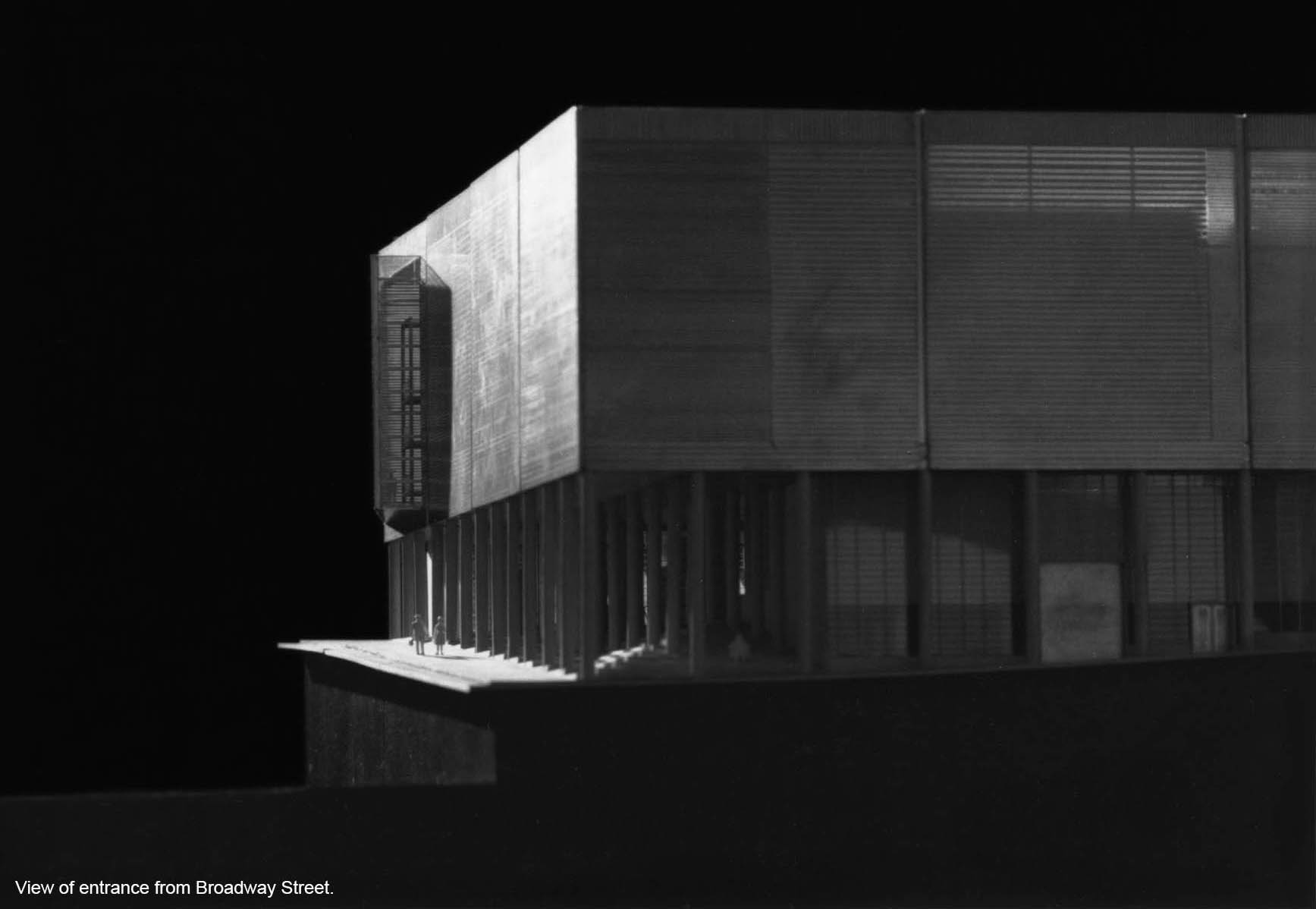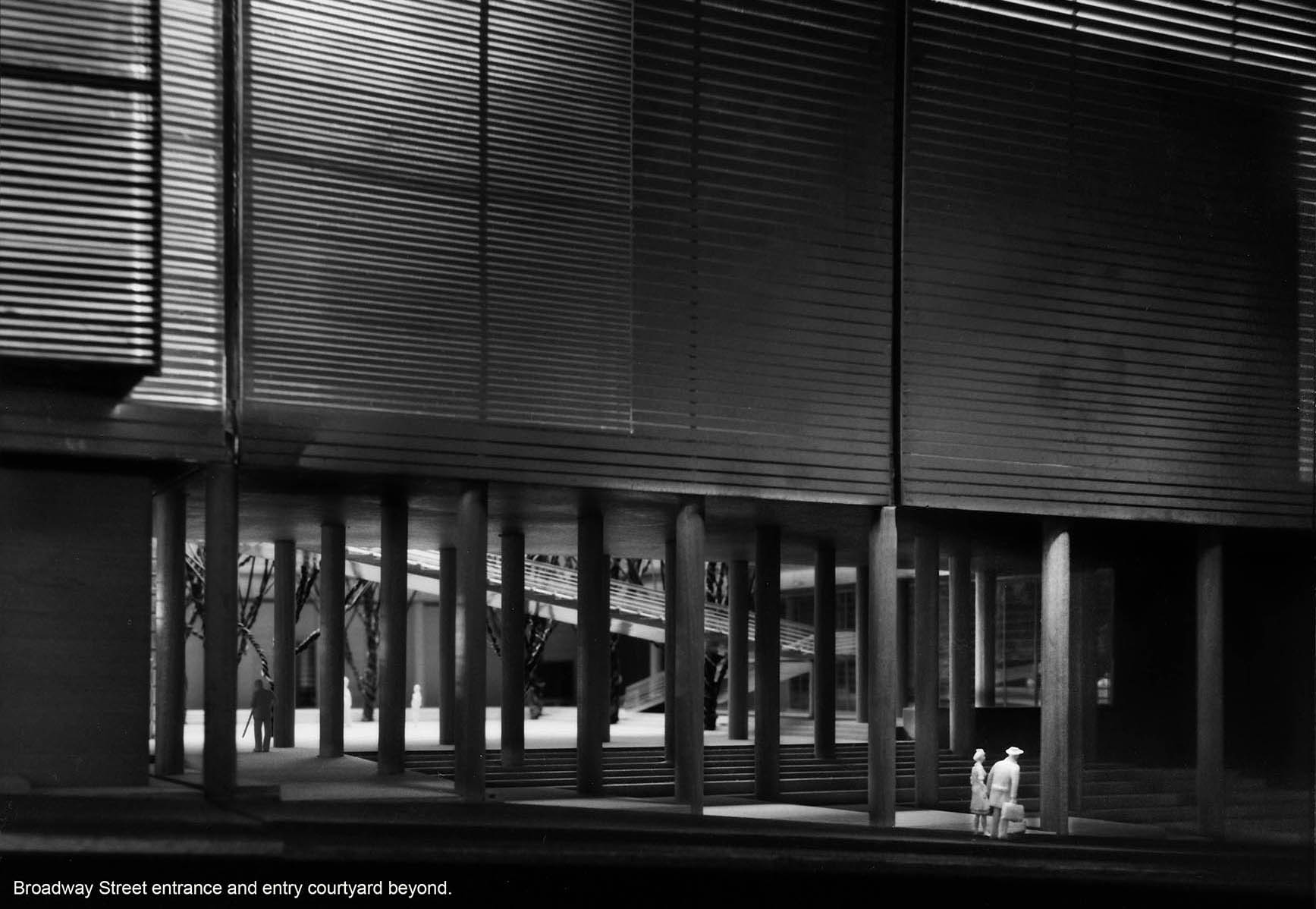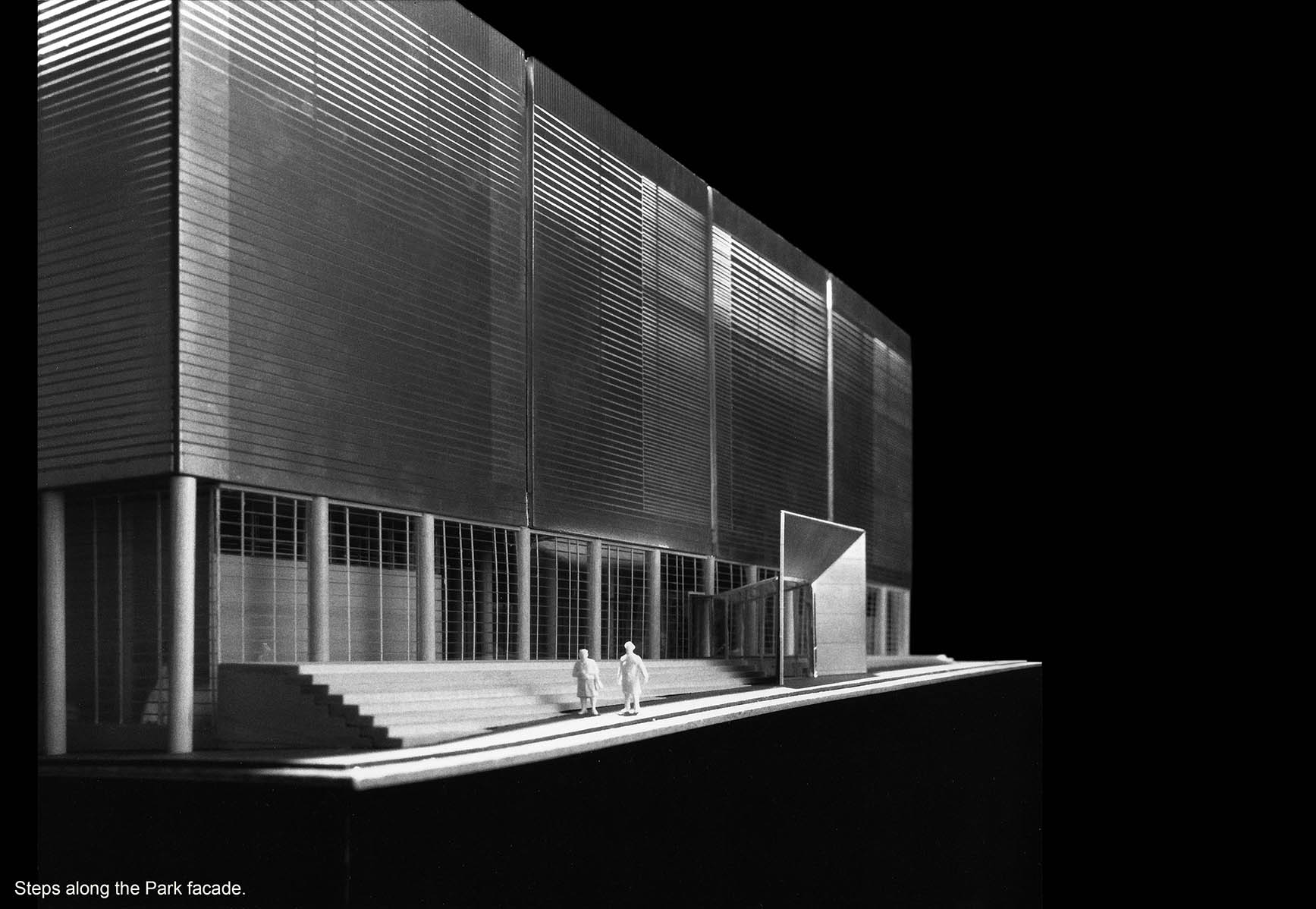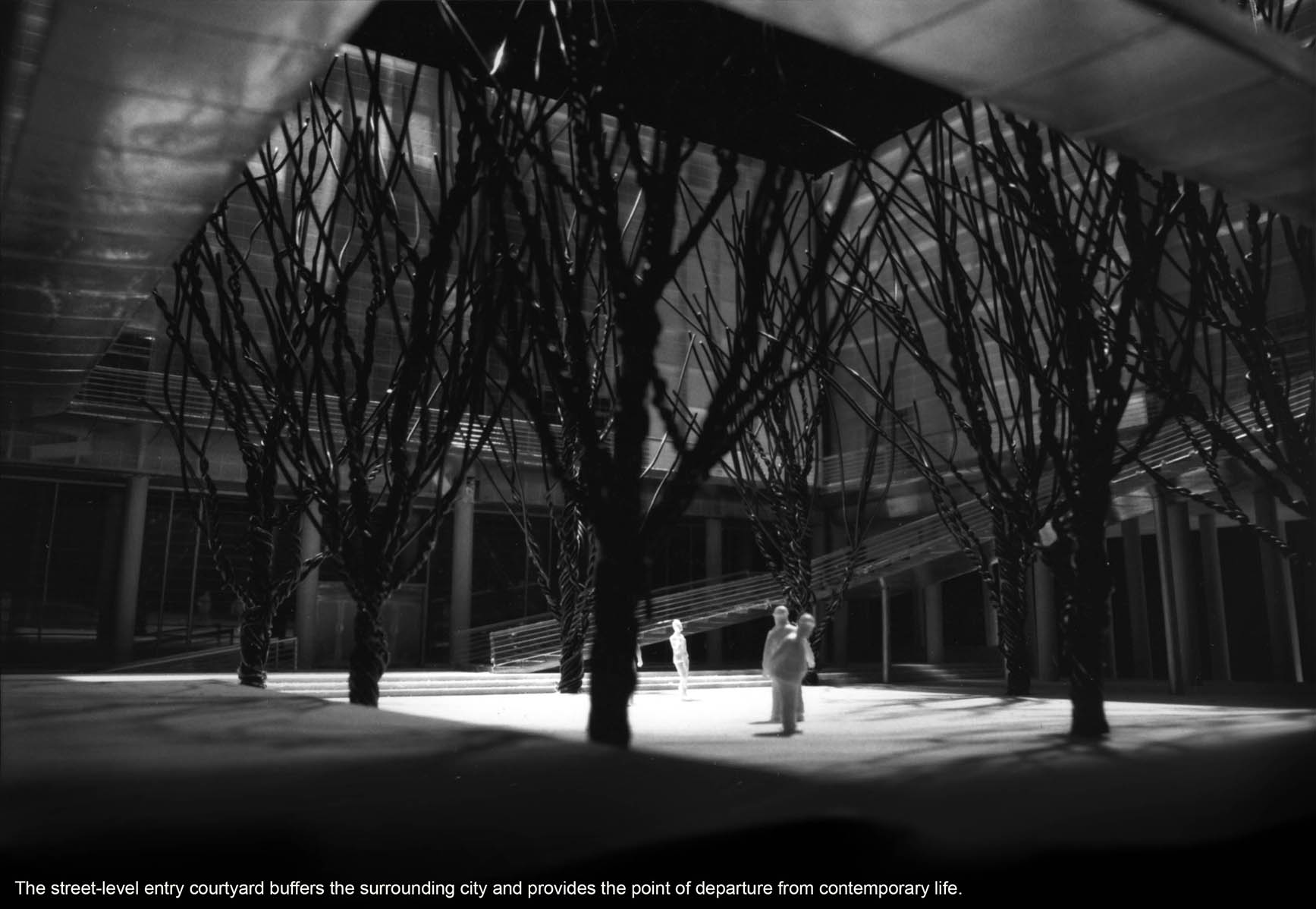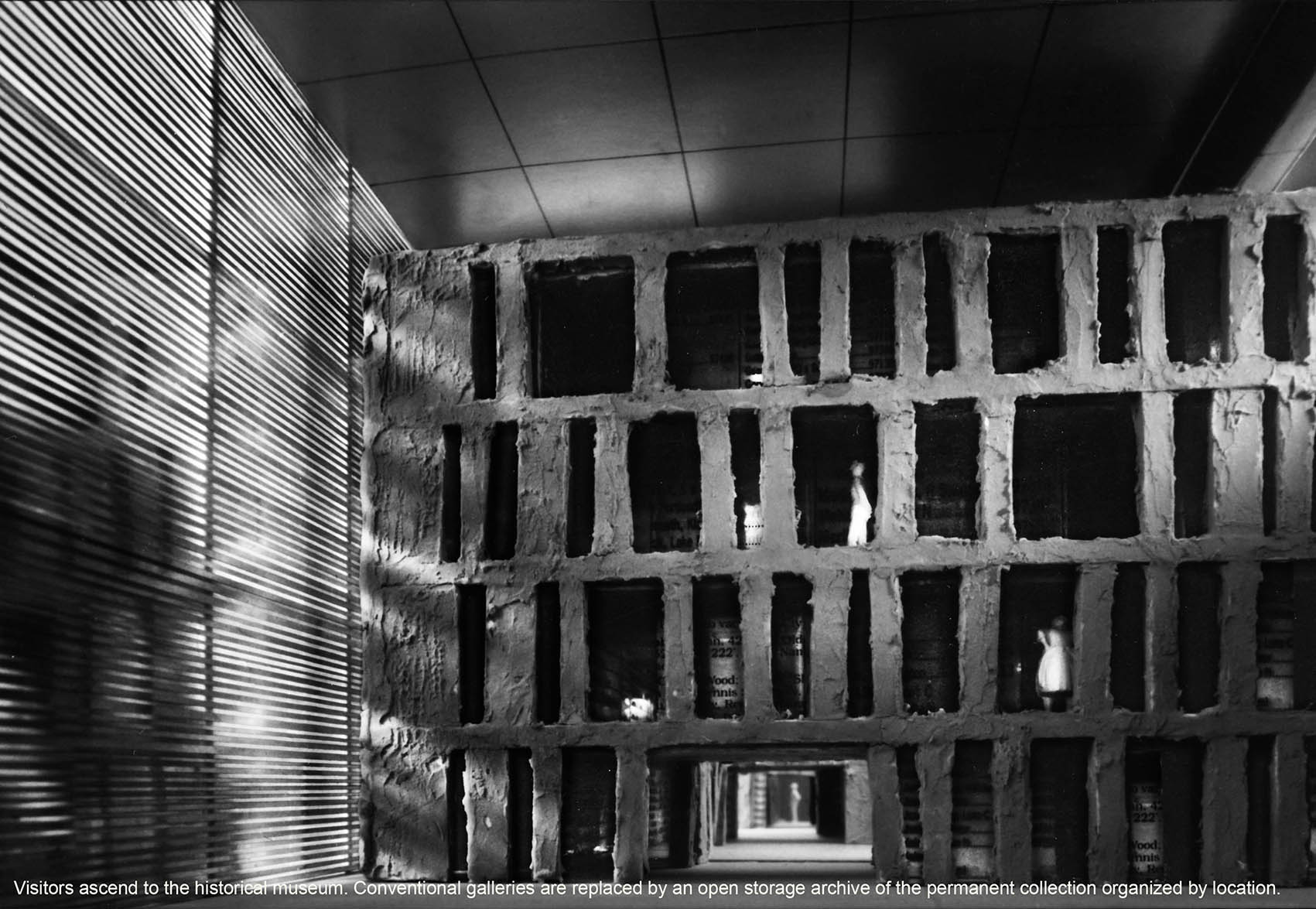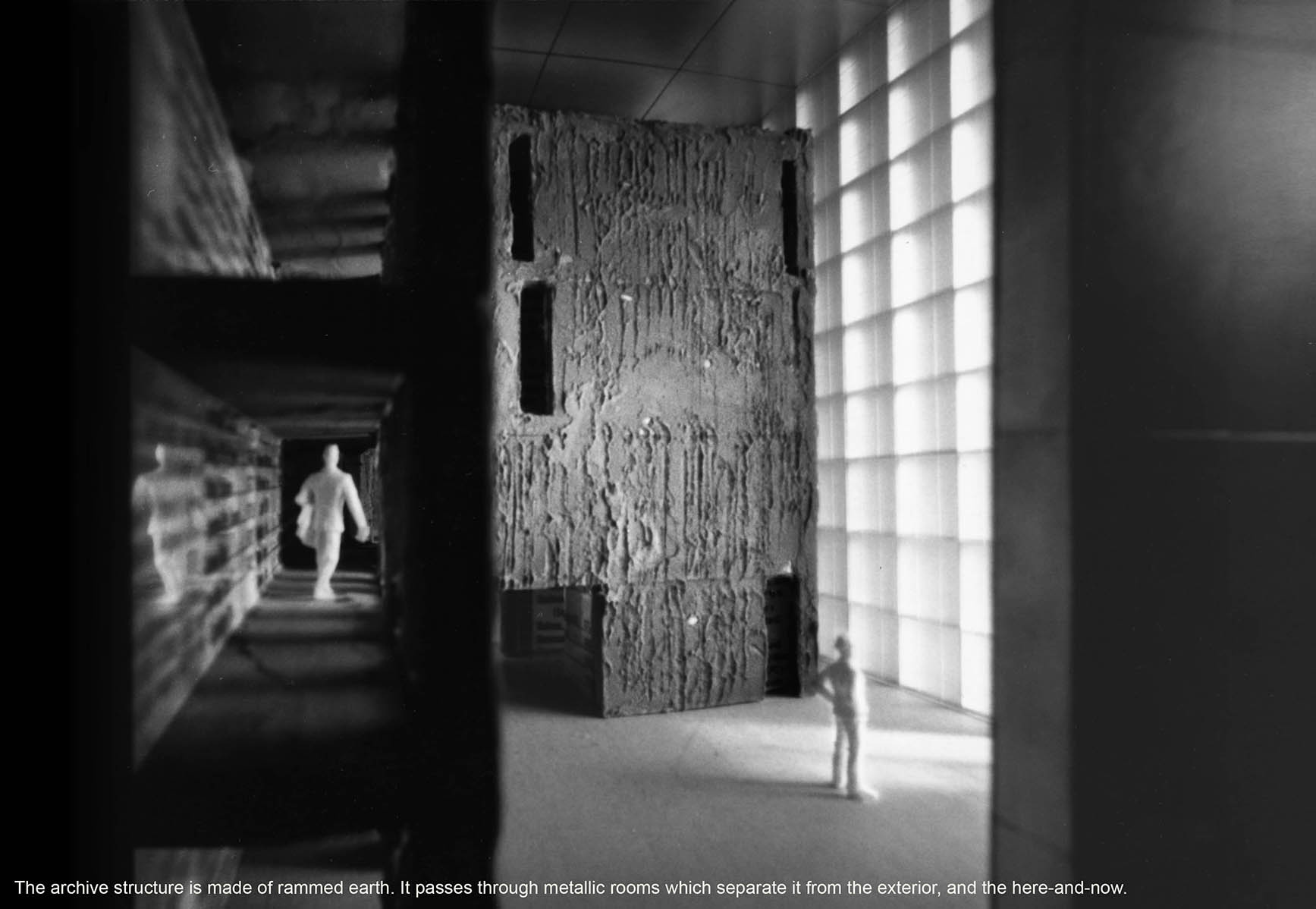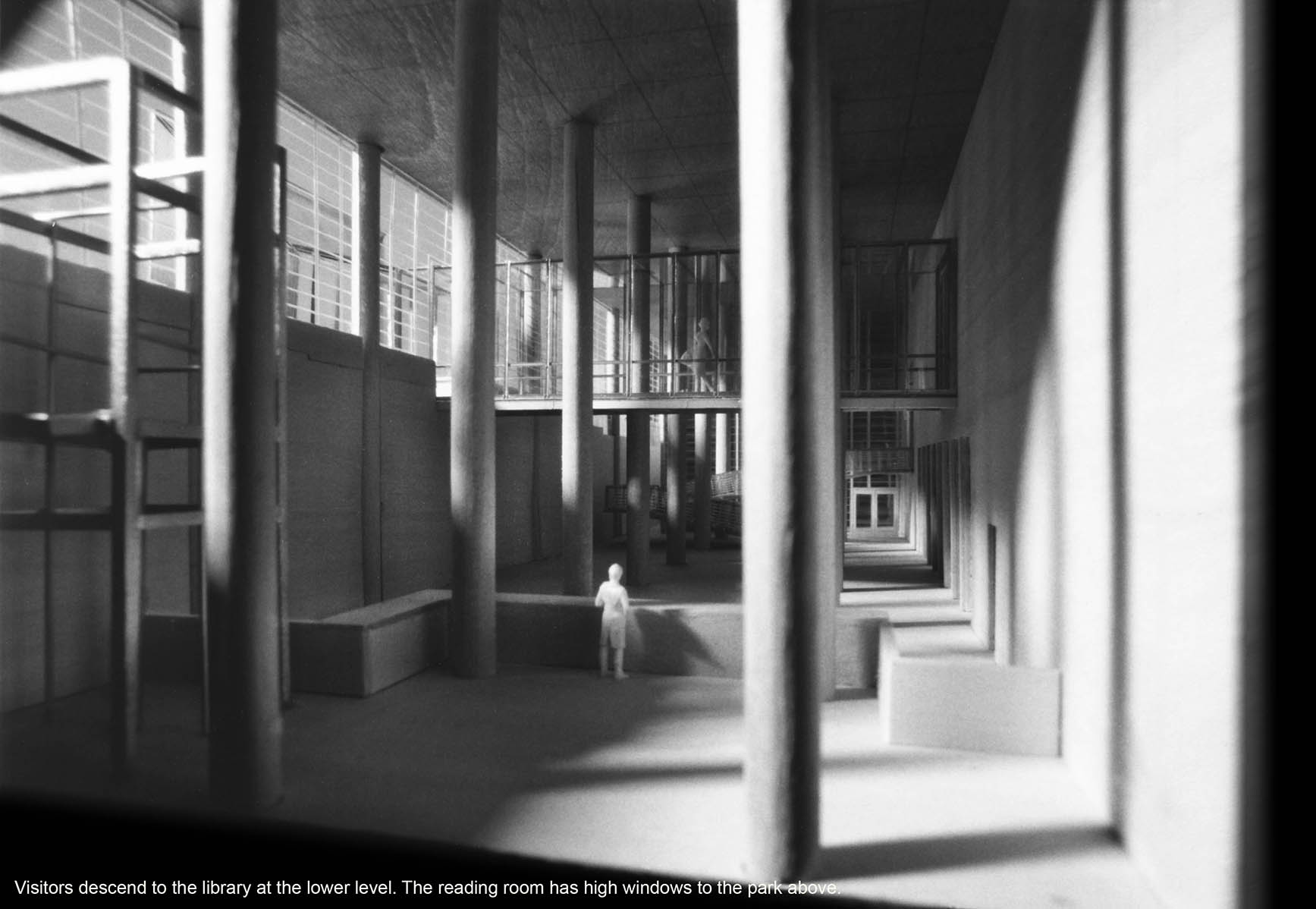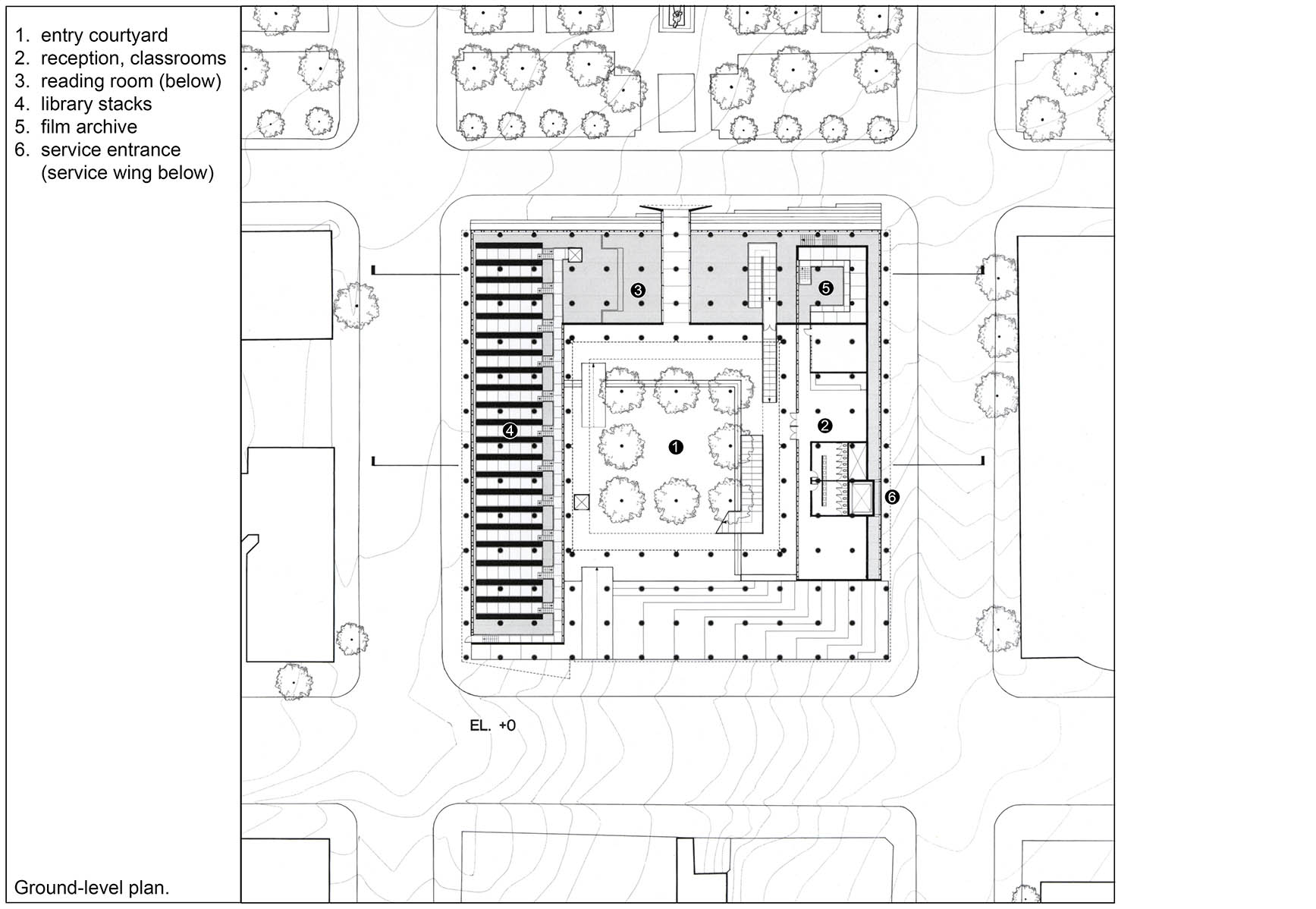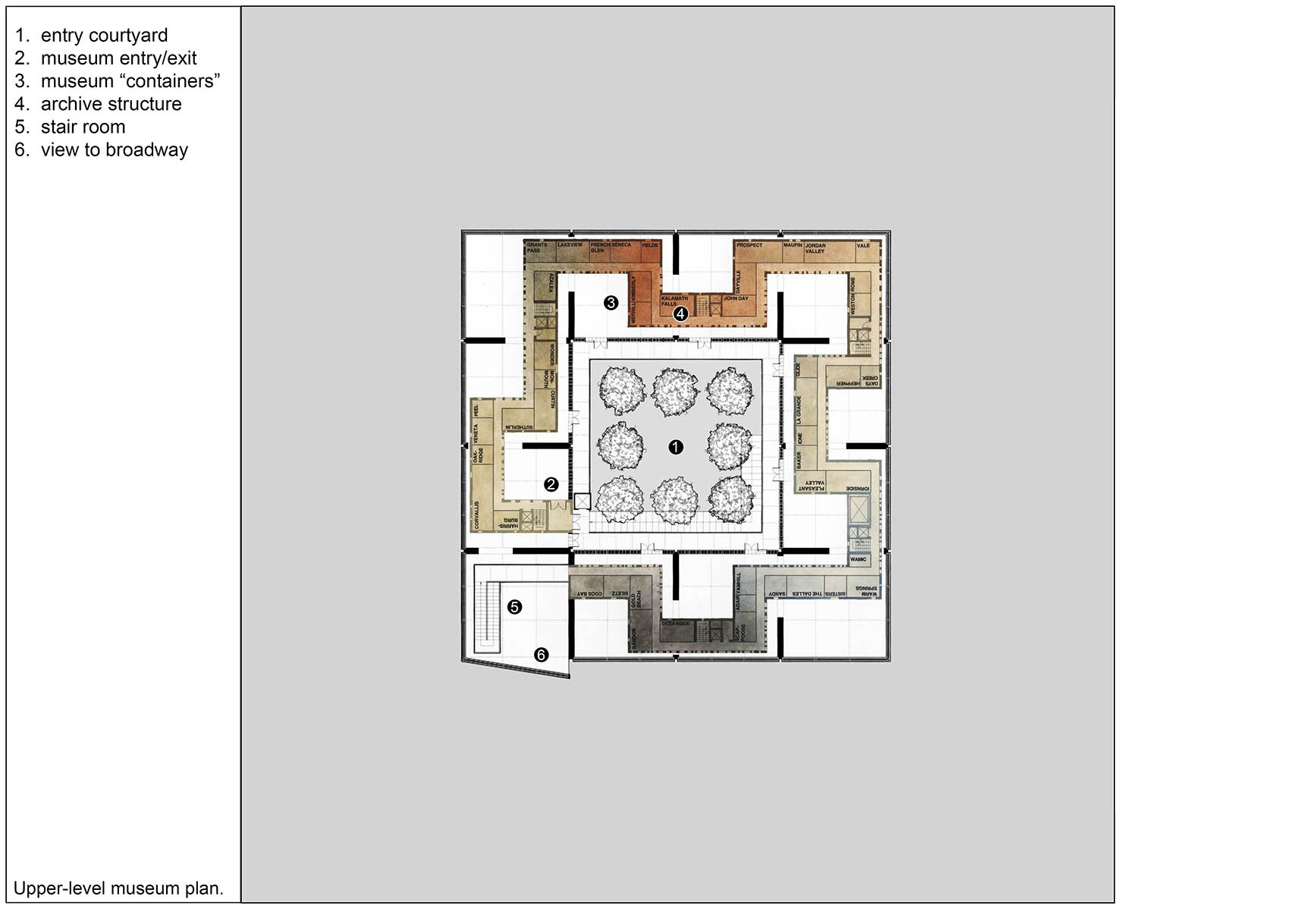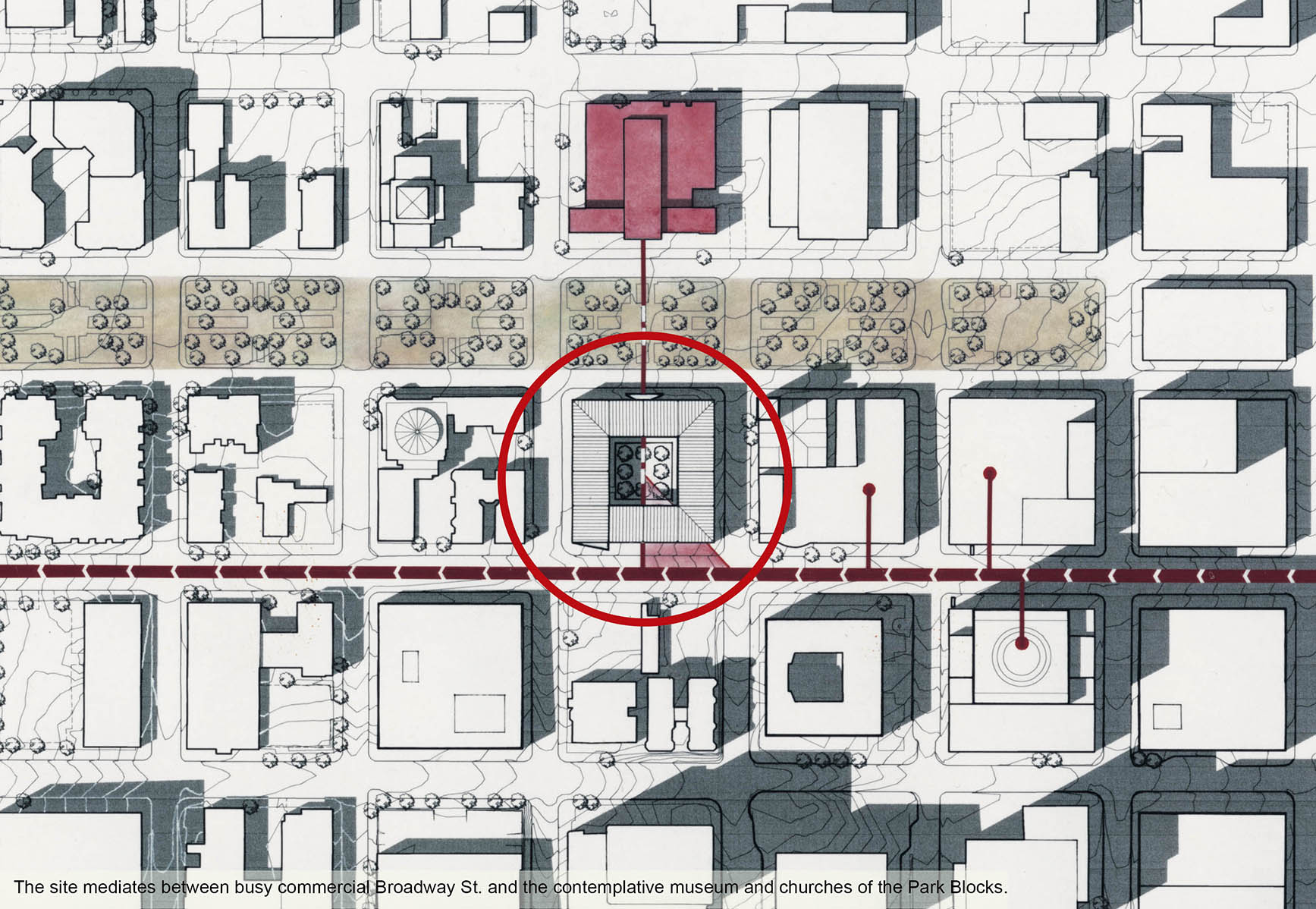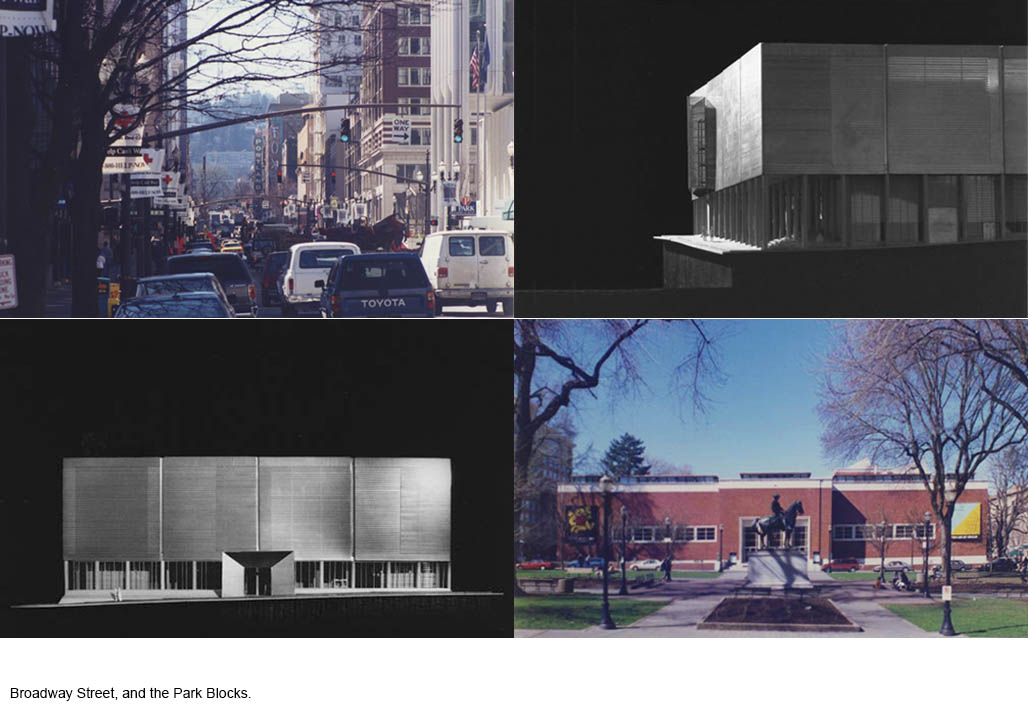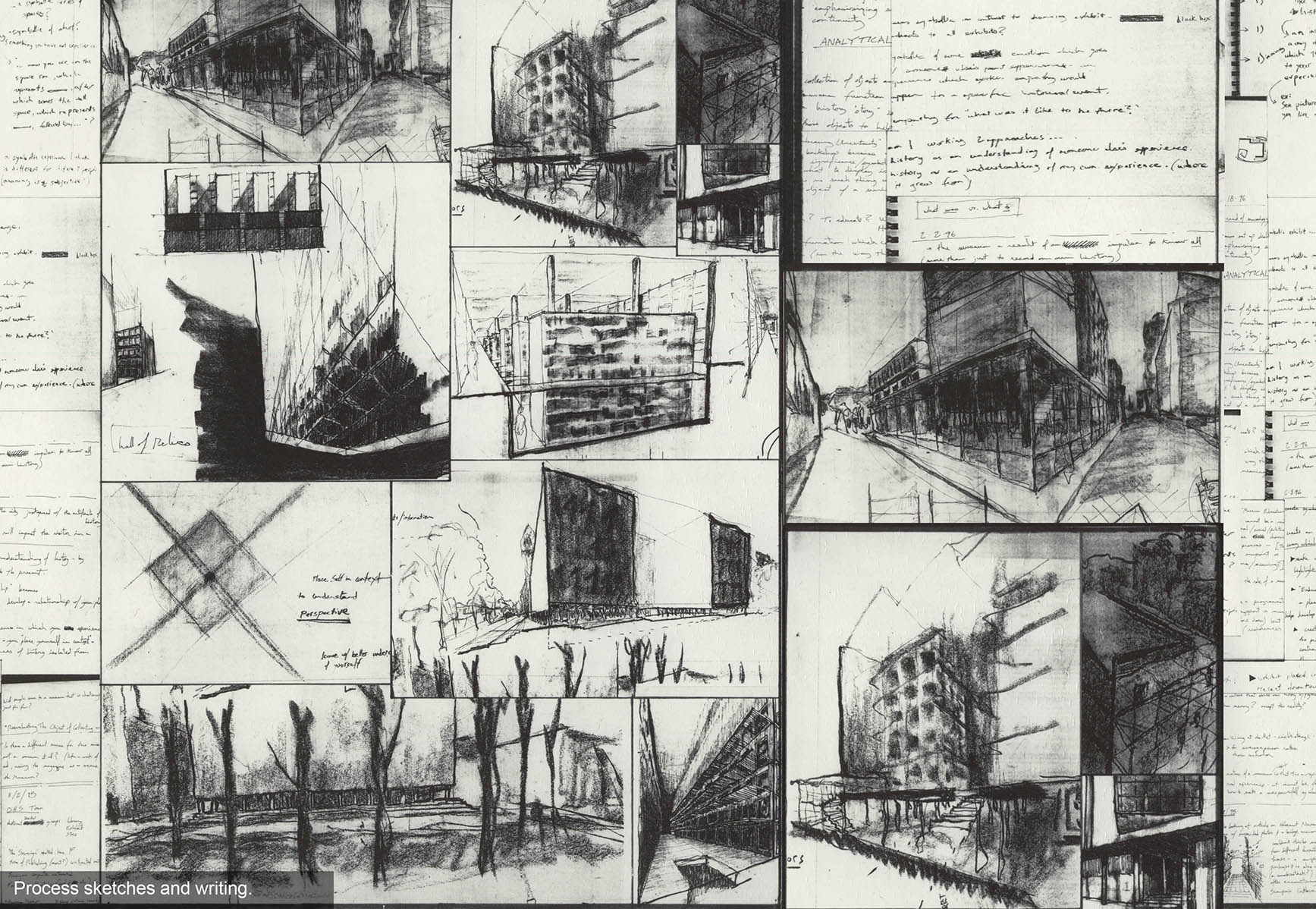Oregon Historical Society
This is an institution whose goal is to help people learn about themselves via the history of their own place. Located in Portland, Oregon, it collects, exhibits and publishes materials related to the historic Oregon Country: its mission is to make that history relevant to contemporary Oregonians via a historical museum, library, film archive, and educational programming.
This proposal grows from a dissatisfaction with typical curatorial story-telling. It seeks to facilitate a deeper engagement for visitors with their past and thereby better fulfill the Society’s mission. Drawing upon a concept used by the Metropolitan Museum of Art, amongst others, conventional galleries are entirely replaced by an “open storage” archive of the permanent collection. The archive is arranged by location: all materials for a particular place, across time and culture, are displayed together. The visitor is released to browse freely through the archive – from “place” to “place” – or to seek locations in which they have interest. As a museum about a place, whose intended audience is the inhabitants of that place, inevitably visitors will seek out their own home. Instead of a narrative chosen by the curator, the archive utilizes the powerful mechanism of curiosity about one’s own life to engage with unknown facets of personal history, creating their own narrative: “Look how it used to be!”… “Who knew that’s who used to live in our town?”
The architecture of the building is designed to reinforce the experience of separation from the here-and-now and facilitate the connection with historical time. The building is entered via an internal courtyard at street-level, buffered from the surrounding city. Using street-level grade as a metaphor for the here-and-now, visitors depart their contemporary lives, either ascending to the museum or descending to the below-grade library. Extending the separation metaphor, the museum is housed within twelve abstract metallic cubes. Light and air are permitted to enter, but direct exterior views are withheld. Within these rooms passes a structure which houses the archive. Constructed of rammed earth from the soil of the Oregon Country’s various regions, the archive’s tactility attracts and connects as the metallic container repulses and separates. The visitor circulates up, onto, and through the archive structure as desired. Those who follow to its end find the last room empty. The archive becomes a stair which begins the return to current time: as Oregonians are collected back to the museum floor they are presented with the only direct exterior view, back down busy Broadway St, as a reminder of the here-and-now.
